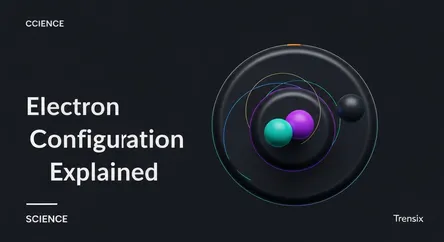Science
Electron Configuration Explained

Understand electron configuration, the layout of electrons in an atom that defines an element's chemical behavior and properties.
What is it?
Electron configuration is the specific arrangement of electrons in the atomic orbitals of an element. It's a standard notation that shows how electrons are distributed among various energy levels (shells) and sublevels (subshells). For example, the configuration for a neon atom is 1s²2s²2p⁶. This notation indicates the energy level number, the type of orbital (s, p, d, or f), and a superscript number for the electrons occupying that orbital. This "address" for each electron helps determine the atom's structure and energy.
Why is it trending?
Electron configuration is a foundational concept in chemistry and physics, underpinning our understanding of matter. Its importance lies in its ability to predict an element's properties, including its reactivity, bonding behavior, and magnetic characteristics. It forms the logical basis for the structure of the periodic table, explaining why elements in the same group exhibit similar chemical behaviors. The concept is crucial in fields like spectroscopy, quantum mechanics, and material science, driving innovation in areas like semiconductors and lasers.
How does it affect people?
The principles of electron configuration have a significant impact on daily life through technology. Understanding this arrangement is key to developing semiconductors, the basis of all modern electronics like computers and smartphones. It also explains the unique properties of materials and the formation of chemical bonds that create everything around us. The vibrant colors in fireworks and the light from fluorescent bulbs are practical examples of electrons changing energy levels within their configuration, a phenomenon that emits light of specific colors.